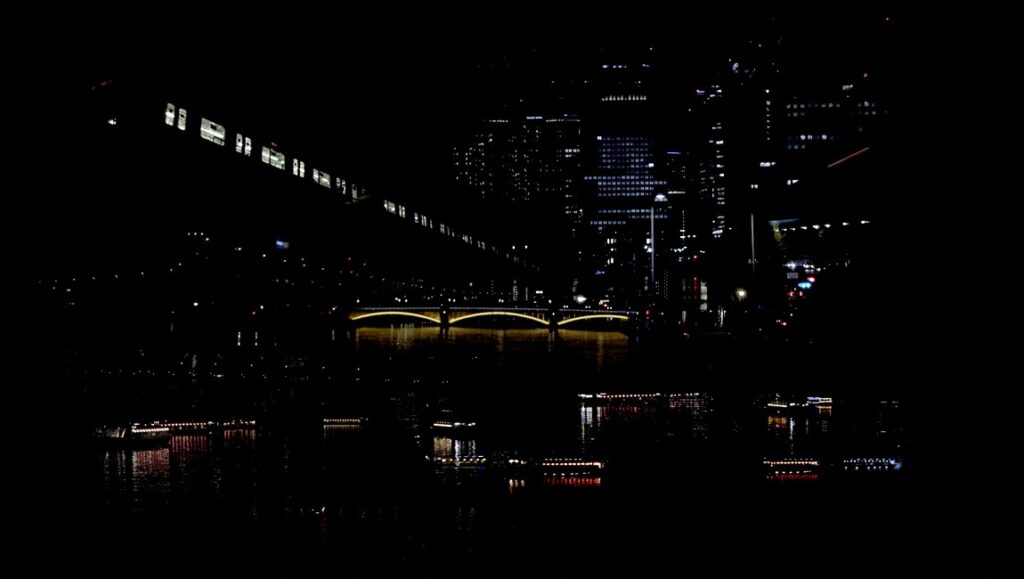Lois Patiño is one of the most experimental figures among the burgeoning Catalan scene. His concerns tend to be painterly, usually affording pride of place to some of the most fundamental elements of visual communication: figures, and especially landscapes. His 2015 short Night Without Distance, a color film presented entirely in reverse-negative, was one of the finest films made that year. Most recently, with his feature Red Moon Tide (2020), Patiño assayed a more narrative approach, albeit an elliptical one. Despite many impressive moments, Red Moon Tide’s mythological approach often diluted the power of his images.
With The Sower of Stars, Patiño is back in his wheelhouse. It’s a short film centered around Tokyo Bay at nighttime, the shimmering lights of boats on the water providing a kind of visual baseline for an increasingly complex weave of isolated points of light, from skyscrapers, neon signage, bridges, and commuter trains. As the film progresses, certain visual anomalies assert themselves, with moving water in the “sky,” bridges “beneath” the ships, buildings intersecting. Patiño has woven a textured skein of illumination, often compressed into an overall flatness, at other times forming a cube-like, multidimensional matrix.
Throughout The Sower of Stars, we hear two alternating voices (Yumika Teramoto and Tetsuro Mareda) offering a fractured, poetic narration. In the final credits, we learn that Patiño has assembled this text from various sources, including Paul Celan, Susan Sontag, and Samuel Beckett. But as the “conversation” progresses, it becomes evident that the male voice embodies the spirit of Death, and the female voice in querying him about its own meaning. Near the conclusion of Sower, Death recites a number of “farewell poems,” short verses written by condemned men that serve as their final testament.
This is the most powerful moment of Patiño’s film, in that it brings the aims of the work full circle. The intersecting visual elements present a Cubist Tokyo that can never exactly exist, and this suggests a point of view — perhaps that of Death — that perceives a reality beyond time and space. The Sower of Stars invites us to share that perspective in all its luminosity.
Published as part of Berlin Film Festival 2022 — Dispatch 3.


Comments are closed.